Today’s book review is the intriguingly-titled Sock Architecture, written by Lara Neel and published by Cooperative Press.
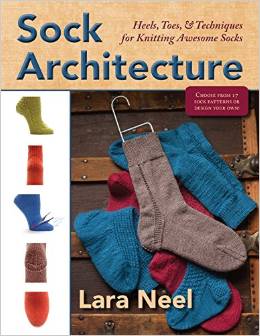
Sock Architecture is, as you might infer from the title, a sock knitting book that is very much concerned with sock structure. [Sometimes when I write a sentence like that, I have to step back and chuckle. A huge percentage of the sock-wearing population is unaware that people still knit socks by hand, and if they are aware of handknit socks, they often say things like “Why spend all that time knitting them when you can buy them so cheaply?” So it amuses me that I know quite a lot of people out there who not only have the patience and skill to knit socks, but also think about the best way to create a sock heel, or wonder if cuff-down is superior to toe-up, or look for new or innovative approaches to something that’s been around for hundreds of years.]
But I digress. For those of us who care about handknit socks, Sock Architecture is a treasure. Because obviously Lara Neel has given a lot of thought to the process of sock knitting, and compiled a lot of helpful technical information in one book. So let’s take a closer look.
There is some very useful information in the beginning section of the book, beginning with an overview of sock knitting in recent history, discussing some of the differences between Western-style socks — traditionally made from cuff down, with an emphasis on horizontal design — and Eastern-style socks — traditionally made from the toe-up and using an afterthought heel, with a more vertically-oriented approach to design. Neel next traces the rise of the so-called French or round heel, then spends some valuable time discussing fit. All of that is good and helpful stuff. But the heart of the book is devoted to a thorough discussion of the structure of a sock, with emphasis on heel and toe styles, organized via the direction of the knitting — and this is where the book really shines.
Neel begins with top-down socks, which for a long time were the traditional and most frequently-used approach to handknit socks. Neel also begins with the flap heel plus gusset method of knitting socks (also the way a great many socks have been made over the years), addressing issues like the height of the flap, different stitch patterns for the heel, and types of heel turns. If you’ve ever wondered what the difference is between, say the Half-handkerchief Heel, the Square Heel and the Round Heel, Neel lays out each type along with pros and cons; she also covers less commonly-encountered heel styles, like the Balbriggan and variants on the Common Heel. Neel shows how to work an Afterthought (or Peasant) Heel, and includes general tips like how to avoid gaps near the heel. The same thorough treatment is given to sock toes; Neel discusses wedge toes (including long, medium and shorter versions to fit different-shaped toes), round toes and swirl toes, to name a few, and there are many clear photographs to walk you through each style. Very valuable info!
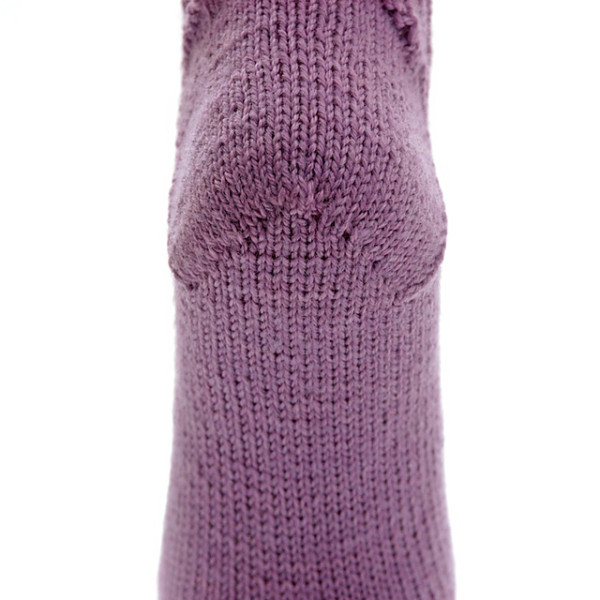
If you’re a toe-up sock knitter, do not despair. There’s just as much information devoted to working socks from toe up. Multiple methods of working toes, tips about cast-ons, gussets, heel styles, tips for stretchy cast-offs, even some links and suggestions for specific designers who have experimented with different styles, it’s all here. It’s great to see a book cover both cuff-down and toe-up approaches in some detail, for those of us who like to experiment with different techniques, and compare different ways of shaping a sock.
And last but not least, you’ll find a pattern section to allow you to try out some of the techniques you just read about. There are 17 patterns, and all are shown in clear photographs with solid-colored yarns, so it’s easy to discern stitch patterns and styles of heels/toes. Seven of the designs are provided in both cuff-down and toe-up form (comprising fourteen of the total 17 patterns in the book), such as the Checked & Square Socks:
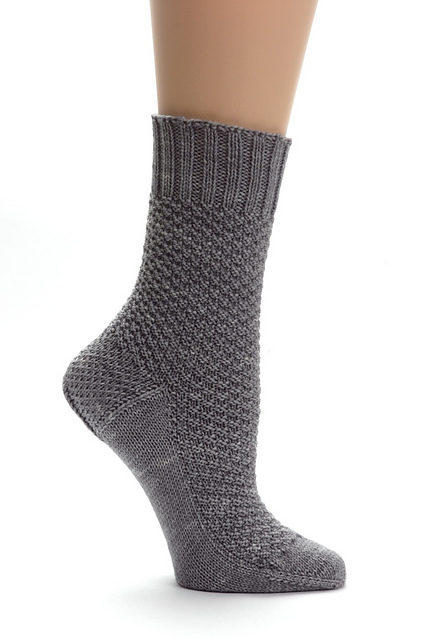
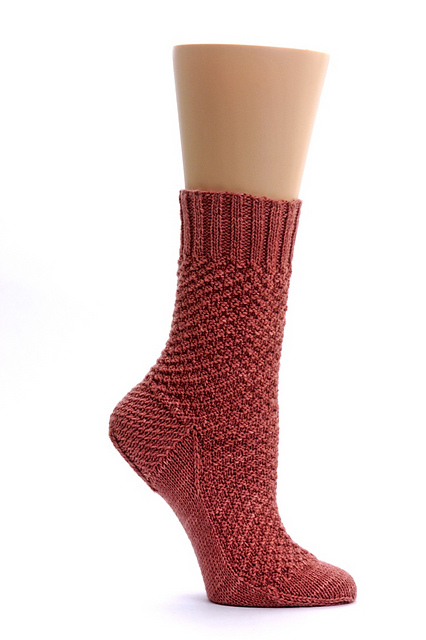
and the Procrastinatrix Socks:
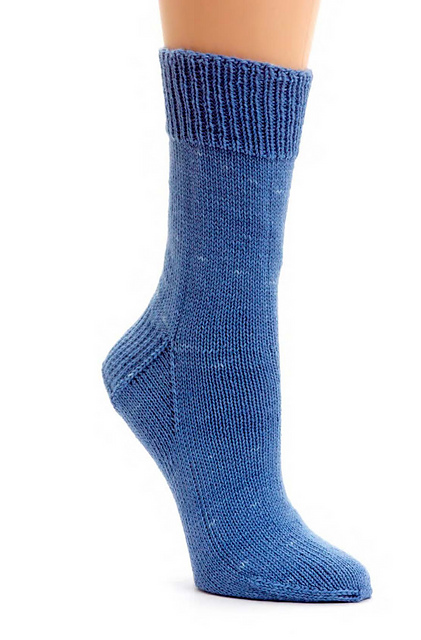
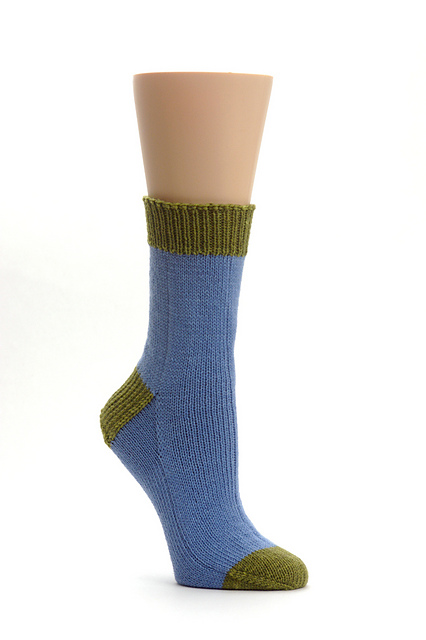
The remaining three designs feature less conventional structure. The Uncommon Dragon socks feature a textured stitch pattern, side ribbing and a shaped common heel that’s grafted at the back.
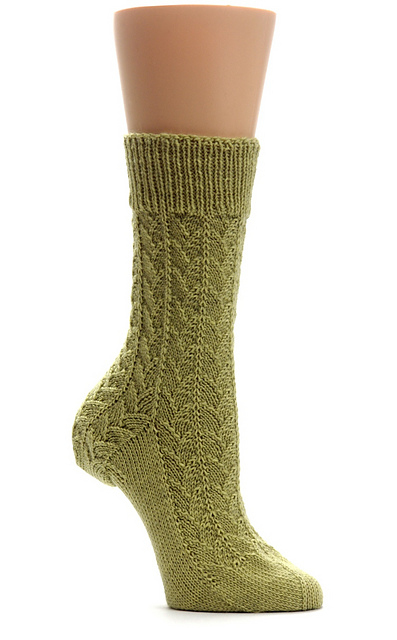
The Bootstrap socks feature a row of garter stitch down the side, a Balbriggan heel (also requiring a bit of grafting) and a wide toe box:
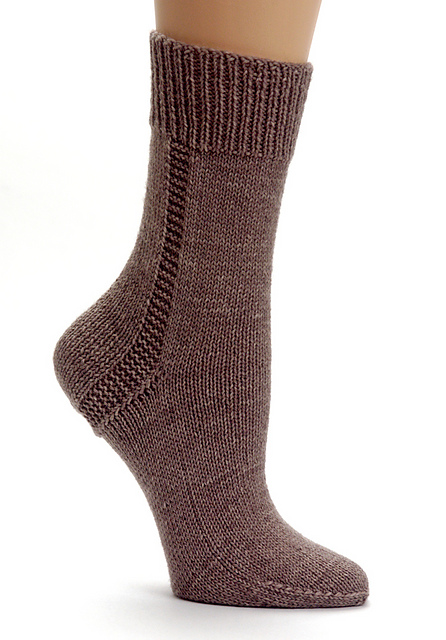
The Adjoin socks are knitted from the toe up, with a novel heel structure: the heel is a flap that extends across the back of the foot, then is bound off, and stitches are picked up around the edge to knit up for the leg.
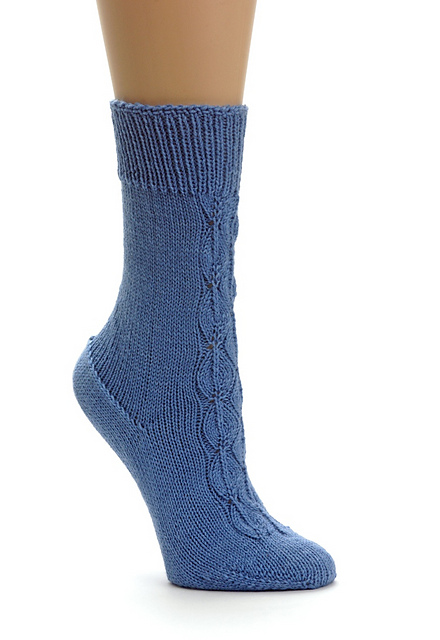
Several things I really like about the patterns: they include a wide range of sizes (Women’s XS through Men’s Large); they include the ability to make a custom size to fit a specific foot, including worksheets that help with the math; there are a lot of close-up photos of specific sections of the socks, like the heels, which clearly show the details of the finished project; some patterns contain multiple options within the pattern (for example, one pattern gives three different toe box options, with full directions for each, allowing very easy customization and experimentation).
I hope that people will not take a quick glance at this book and skip over it, dismissing it as too basic. While the socks are all knit in solid yarn rather than self-patterning or brightly handdyed yarns, and they are photographed very straightforwardly — no fancy locations or whimsical styling — there is a goldmine of technical information in this book. The patterns are fully customizable and give the reader a chance to experiment with a whole host of techniques and styles of sock knitting, plugging in different variables — various toe styles, cuff-down vs. toe-up construction, heel and gusset variations. By providing all these options, as well as help in customizing patterns, a sock knitter can find a perfect and individualized fit. This would be a great resource for someone who has recently learned the basics of how to knit a sock and wants to explore different methods to decide which styles fit her foot better or to add some variety to her sock repertoire. But even sock knitters who have been knitting socks for a while will learn from Neel’s excellent resource.
Details:
136 pages; softcover; printed copy MSRP $26, 95 but available for $23.99 via the link above; PDF version only for $16.95/both versions for $26.95 via the Cooperative Press website.
Photographs copyright 2014 Lara Neel, used with permission for review purposes.

Great review, hoar.
Lara is originally from my neck of the woods, she’s a niece of a good friend of mine. I hope someday to get to meet her.
I came to the same conclusion: that the book is a really great resource for someone who has just started knitting socks, but also has good information for us experienced sock knitters.
Thanks so much for this thoughtful review of what looks like an excellent resource – on my list.
I enjoy telling people that when I knit socks, the raw materials start out way more expensive than any socks in stores, and then I have to put tens of hours of work into them, after which they have a shorter life and require time-consuming care to wash and, if needed, mend. If they’re not walking backwards slowly after that, trying not to agitate the crazy woman, I then tell them that I love it, and that, as a bonus, my feet are probably warmer than theirs.
Sounds like a great book – I’m usually a pattern follower, but have oftentimes mused about what different shapes mean for fit and how else one might do it.
I don’t agree that they have a shorter shelf life. My hand knitted socks have died after 4 years constant wearing. Purchased socks last a very little time comparatively and get uncomfortable much quicker. So they are well worth making, and not a crazy thing to do at all.